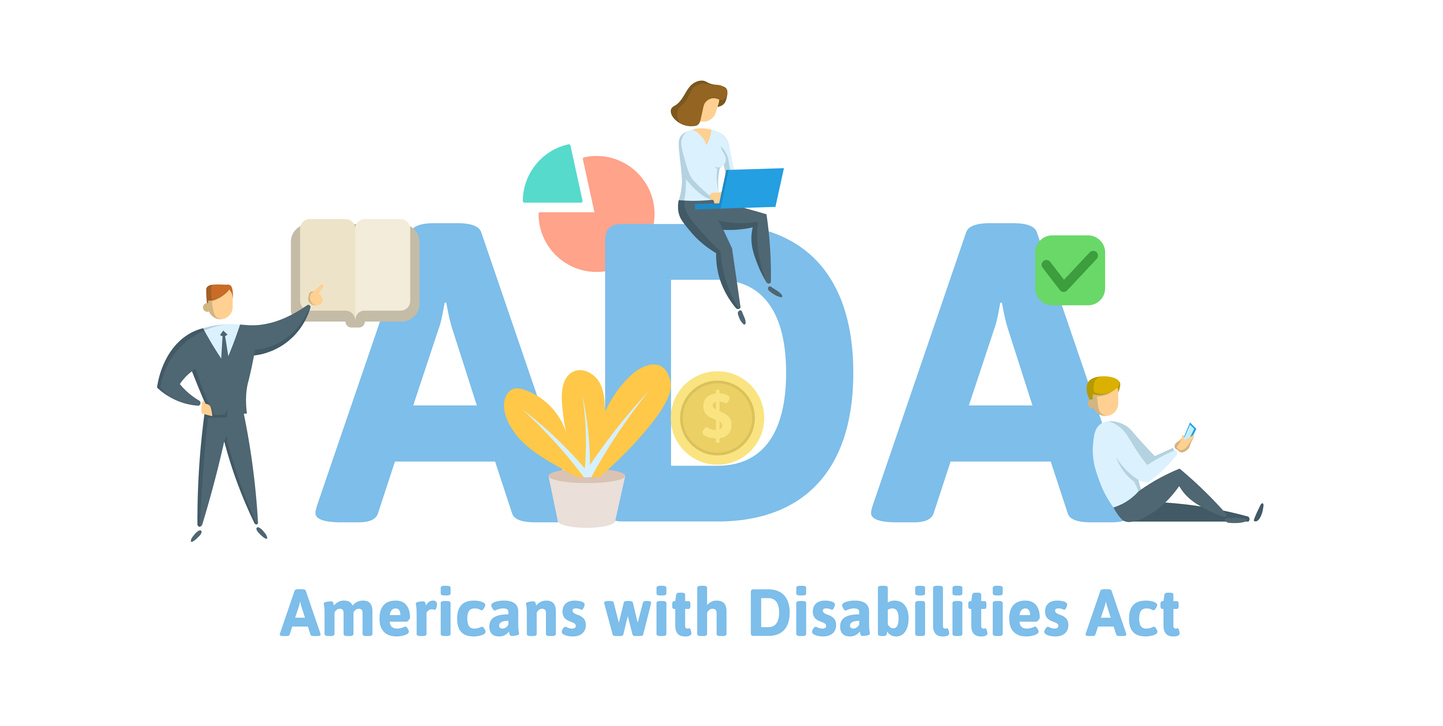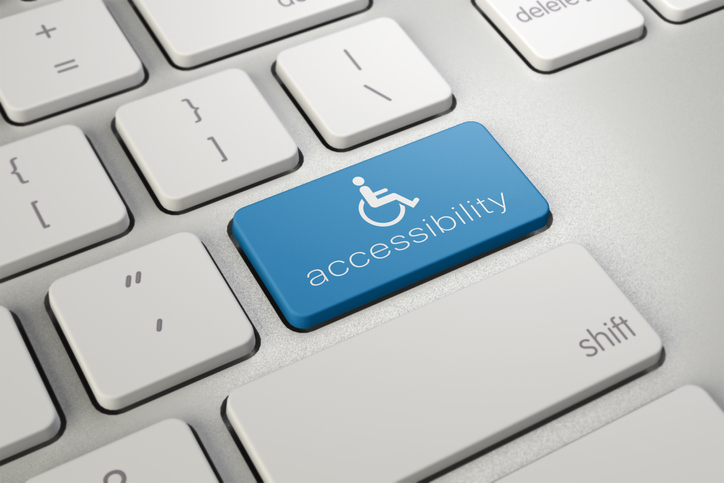
ADA Compliance
The 10th Annual Global Accessibility Awareness Day (GAAD) took place May 20, 2021. It's inception had one purpose: to get everyone talking, thinking and learning about digital access/inclusion and people with different disabilities.
With more businesses delving into an online focus than ever before, it’s important to keep your content accessible and courteous to anyone who might be visiting your website. Not only does this make for a good business model, but staying ADA compliant can keep you out of legal trouble as well as in good public standing.
The Americans with Disabilities Act, or ADA, was put in place to halt discrimination against people with disabilities. You’ve likely already seen products of the ADA in the form of handicap parking spaces, wheelchair ramps, and braille sign translations. In the digital world, ADA compliance can be seen in audio text transcripts for people with hearing disabilities, or text resizability for those with vision impairments. There’s a lot to consider when building a website, and universal accessibility should always be at the top of the list.

Common Shortcomings
While there is no hard and fast checklist for reaching ADA compliance, the most agreed upon rules can be found in the Web Content Accessibility Guidelines, or WCAG. This website outlines many key factors in maintaining ADA compliant accessibility. Below are some of the most common shortcomings listed in the WCAG.
- Missing Image Alt Text
- Poor Text Contrast
- Empty Links
- Missing Language Tags
- Missing Audio Captions
- Un-pausable Animations
- Reliance on Color
- Restricted Text Size
- Rasterized Text
This is only a small sample of the many accessibility features that are often overlooked by website owners. As the internet continues to draw us closer together and teach us about one another’s differences, it’s more important than ever before that we keep our World Wide Web open to everyone and designed to accommodate every user’s needs.
The Importance of Accessibility
There are over 1 billion people in the world with disabilities. These include visual and hearing impairments, as well as cognitive and motor disabilities. This incredibly large demographic will likely make up a substantial part of your website’s traffic, so it’s important to tailor your website so that they receive just as good an experience as everyone else.
Not only is accessibility a must have from an ethical standpoint, it’s also a legal requirement as well. The ADA is a “Strict Liability Law,” which means it doesn’t matter what your intent or excuse is, if your website discriminates against people with disabilities, it’s a violation. The ADA doesn’t necessarily apply to every business website, but its best to be safe and plan ahead.

Helpful Resources
As mentioned before, the Web Content Accessibility Guidelines is the best place for accessibility insight. There is a lot to cover though, and it can be a daunting task to approach. Fortunately, there are resources to make the process a bit more manageable.
Automatic website scans are available that can sift through your website pages and seek out common accessibility failures—you can find one here. While these scans are good for a quick sample check, they don’t catch everything. For a more in depth examination, you can hire a professional to perform an Accessibility Audit of your site. These audits can be a little pricey, but it’s much more affordable than getting into a legal case over a malicious website failure.
All in all, your best bet for meeting ADA compliance is to research the topic yourself! There are tons of ways you can start improving your website, and as technology grows, we are constantly learning new ways to remove barriers from disabled persons’ lives. Adding your own effort to the cause is just one way to make the internet a little bit more accessible to others, and the world a little bit better for everyone.
Need an Accessibility Audit?
Our website audit will identify accessibility issues on your website. We’ll provide you an in-depth report of areas you need to improve and then have our developer address those issues. Schedule your website audit today!
Don't miss out on our tips!
Submit your email to receive the latest tips & tricks to help your business succeed!
